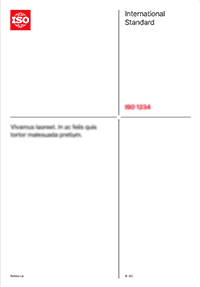Тезис
This document provides a conceptual and terminological framework for the other ITU-T X.500-series Recommendations | parts of ISO/IEC 9594 which define various aspects of the Directory.
The functional and administrative authority models define ways in which the Directory can be distributed, both functionally and administratively. Generic Directory System Agent (DSA) and DSA information models and an Operational Framework are also provided to support Directory distribution.
The generic Directory Information Models describe the logical structure of the Directory Information Base (DIB) from the perspective of Directory and Administrative Users. In these models, the fact that the Directory is distributed, rather than centralized, is not visible.
This Recommendation | International Standard provides a specialization of the generic Directory Information Models to support Directory Schema administration.
The other ITU-T Recommendations in the X.500 series | parts of ISO/IEC 9594 make use of the concepts defined in this Recommendation | International Standard to define specializations of the generic information and DSA models to provide specific information, DSA and operational models supporting particular directory capabilities (e.g., Replication):
a) the service provided by the Directory is described (in Rec. ITU-T X.511 | ISO/IEC 9594-3) in terms of the concepts of the information framework: this allows the service provided to be somewhat independent of the physical distribution of the DIB;
b) the distributed operation of the Directory is specified (in Rec. ITU-T X.518 | ISO/IEC 9594-4) so as to provide that service, and therefore maintain that logical information structure, given that the DIB is in fact highly distributed;
c) replication capabilities offered by the component parts of the Directory to improve overall Directory performance are specified (in Rec. ITU-T X.525 | ISO/IEC 9594-9).
The security model establishes a framework for the specification of access control mechanisms. It provides a mechanism for identifying the access control scheme in effect in a particular portion of the Directory Information Tree (DIT), and it defines three flexible, specific access control schemes which are suitable for a wide variety of applications and styles of use. The security model also provides a framework for protecting the confidentiality and integrity of directory operations using mechanisms such as encryption and digital signatures. This makes use of the framework for authentication defined in Rec. ITU-T X.509 | ISO/IEC 9594-8 as well as generic upper layers security tools defined in Rec. ITU-T X.830 | ISO/IEC 11586-1.
DSA models establish a framework for the specification of the operation of the components of the Directory. Specifically:
a) the Directory functional model describes how the Directory is manifested as a set of one or more components, each being a DSA;
b) the Directory distribution model describes the principals according to which the DIB entries and entry‑copies may be distributed among DSAs;
c) the DSA information model describes the structure of the Directory user and operational information held in a DSA;
d) the DSA operational framework describes the means by which the definition of specific forms of cooperation between DSAs to achieve particular objectives (e.g., shadowing) is structured.
Общая информация
-
Текущий статус: ОпубликованоДата публикации: 2020-11Этап: Опубликование международного стандарта [60.60]
-
Версия: 9
-
Технический комитет :ISO/IEC JTC 1/SC 6ICS :35.100.70
- RSS обновления
Изменения
Поправки принимаются, когда обнаруживается, что в существующий документ по стандартизации необходимо добавить новый материал. В них также могут быть включены редакционные или технические исправления, которые необходимо внести в существующий документ.
Amendment 1
Версия 2021
Жизненный цикл
-
Ранее
ОтозваноISO/IEC 9594-2:2017
-
Сейчас
-
00
Предварительная стадия
-
10
Стадия, связанная с внесением предложения
-
20
Подготовительная стадия
-
30
Стадия, связанная с подготовкой проекта комитета
-
40
Стадия, связанная с рассмотрением проекта международного стандарта
-
50
Стадия, на которой осуществляется принятие стандарта
-
60
Стадия, на которой осуществляется публикация
-
90
Стадия пересмотра
-
95
Стадия, на которой осуществляется отмена стандарта
Изменения
Содержат дополнительные материалы; доступны для приобретения; не включены в текст действующего стандарта.ОпубликованоISO/IEC 9594-2:2020/Amd 1:2021
В стадии разработкиISO/IEC 9594-2:2020/DAmd 2
-
00


